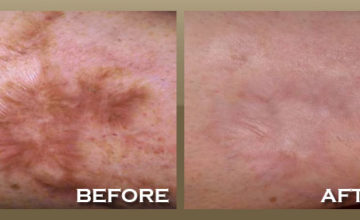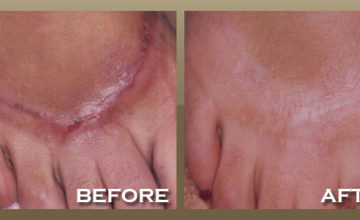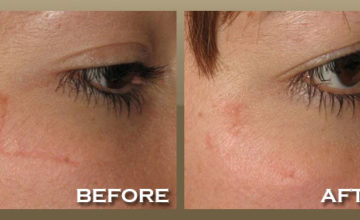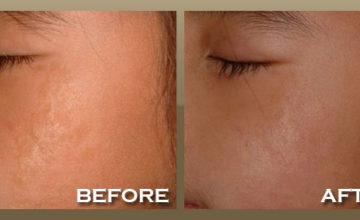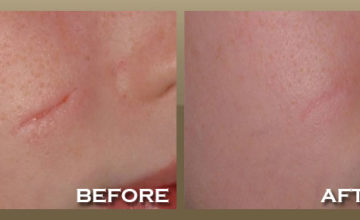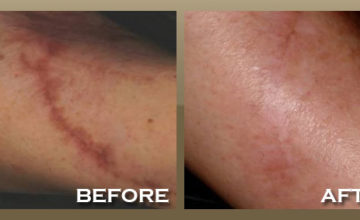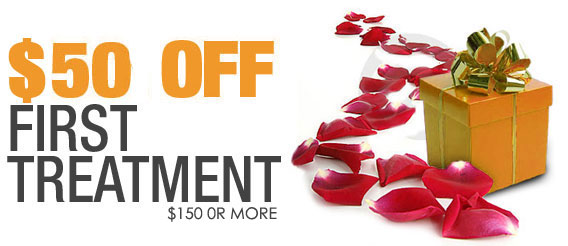Wounds produce scars as they heal. How severe or noticeable the scar is depends on the type and location of the injury.
Unfortunately, scarring can be a source of embarrassment and low self-esteem. Luckily, new surgical procedures, skin resurfacing technologies, and other treatments are making it possible for scars and scar tissue to be successfully erased or minimized, greatly improving the skin's appearance, and your self-esteem! Dr. Raphael Darvish can treat your scars using a variety of treatment options, improving the size, texture and color of the scar.
Different types of scars respond to different types of treatments. And sometimes more than one procedure is needed. Chemical peels ranging in strength and laser treatments such as Fractionated Laser Treatment (FLT), a non-invasive laser therapy designed to dramatically repair scars while improving skin texture and pigmentation. Common treatment methods also include dermal filler injections and microdermabrasion.
For a consultation on how to eliminate your scars or any other cosmetic issue you may be having, please click here or call us at 310.979.SKIN (7546). At your consultation, Dr. Darvish will address your concerns and suggest the most appropriate procedure. Dr. Darvish personally oversees all treatments and can be contacted via email or telephone for any pre or post procedure questions you may have.
Fraxel Laser Scar Removal
How to Treat Scars on the Face
Scar Removal FAQs
A: Fractionated Laser Treatment (FLT) is an innovative, non-invasive laser therapy designed to dramatically repair fine lines, wrinkles, and acne scars while improving skin texture and pigmentation – even on delicate skin. It is a proven, safe approach to repairing aging and sun-damaged skin, with many of the benefits of ablative laser skin resurfacing (resurfacing the skin by removing it or vaporizing it), but without the downtime, side effects, and lengthy recovery periods.
A: Think of your skin as a family portrait or digital photograph in need of high-quality restoration or touch up. Just as a damaged painting is delicately restored one small area at a time, or a photographic image is altered, pixel by pixel, FLT improves your appearance by affecting only a fraction of your skin at a time with thousands of tiny microscopic laser spots.
A: A novel approach to laser skin treatment, Fractionated Laser treatments represent a new science and category of cosmetic skin surgery that offers patients the positive results of ablative laser resurfacing with the low-impact benefits of non-ablative laser or light-based therapies. Unlike the often prolonged healing involved with ablative lasers that remove the top layer of skin, the FLT procedure produces tiny, microscopic sites of thermal impact separated by areas of unaffected, healthy tissue. The spared healthy tissue between treatment zones contains viable cells that promote rapid healing of the outer skin layers.
A: The first step is to thoroughly cleanse the skin. A topical anesthetic may also be applied to provide more comfort during the procedure.
A: A typical treatment regime consists of between three to six sessions, which are approximately 30 minutes long, and spread one to three weeks apart.
A: After your very first Fractionated Laser Treatment, you will begin to feel the difference in your skin, as it gradually becomes softer, smoother and fresher. Fine lines around your eyes will noticeably fade. So will uneven coloring and the brown spots caused by aging, acne, melasma and sun exposure.
A: Wrinkles, poor texture, large pores, sun spots, brown spots, scars, melasma, and uneven pigmentation can be treated successfully with the Fractionated laser. Optimal improvement is usually visible in about two to three months.
A: Fractionated Laser treatments offer the benefits of speedy healing and no downtime. Side effects are minimal and usually limited to a sunburn-like redness that disappears anywhere from an hour to a day or two depending on what level of treatment you have received. Discomfort fades quickly, but the skin may maintain a bronzed or pinkish tone for five to seven days. The pinkish color is a signal that the skin is healing and that there is adequate blood circulation to the dermal tissue. You may also experience some mild swelling for up to three days. As the new epidermal tissue replaces the damaged tissue, your skin will flake off. This is an excellent sign that your body is replacing the treated tissue with new skin cells. Moisturizer can counteract some of the flaking effect.

